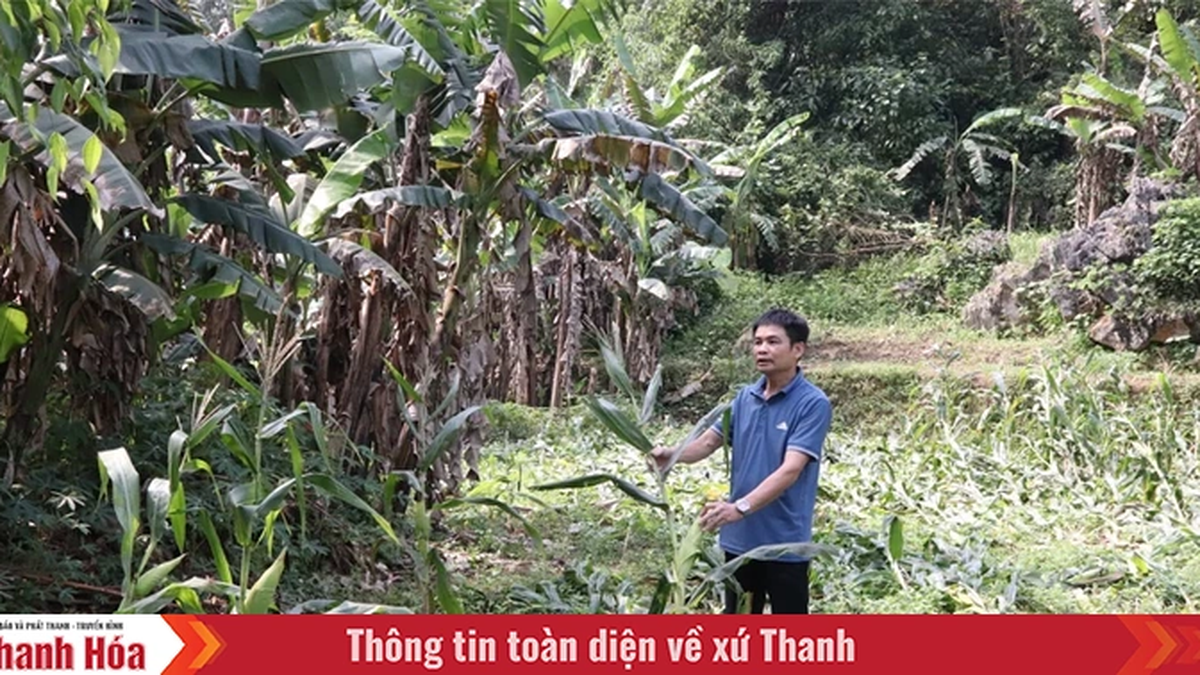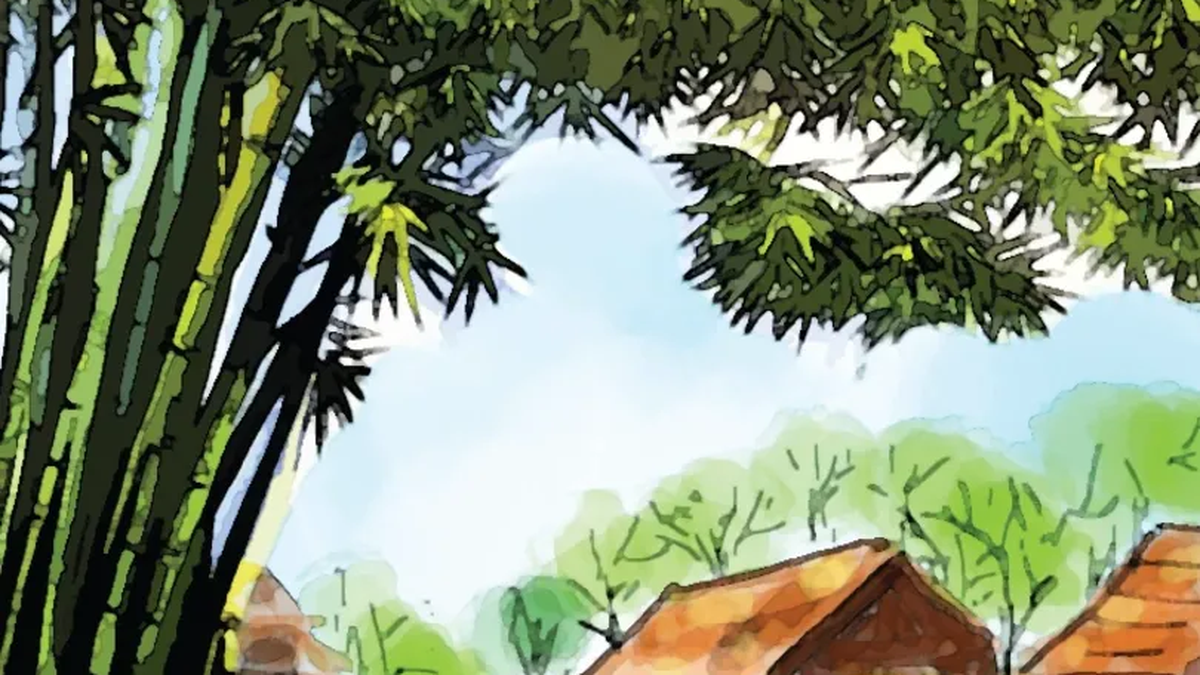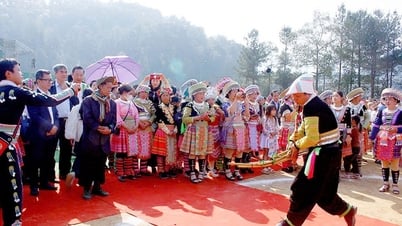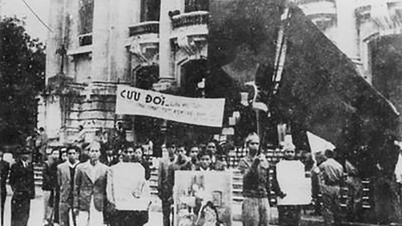GIA LAI - The million-year-old stacked rocks in Chu Se district can remind visitors of the famous stone plate reef in Phu Yen .

The ancient stone beach of Don Hyang village, De Ar commune, Mang Yang district is located at the foot of the dam of the H'Chan hydroelectric plant, on the Ayun river, bordering Bar Maih commune, Chu Se district. The stone beach is about 45 km from the center of Pleiku city, with a concrete road leading to it, but many sections are steep and winding.

The rock beach is about 3 hectares wide. A forest management officer in this area said that it is currently the dry season so people can freely visit the rock beach. However, visitors should avoid climbing high sections with water because it is slippery and easy to fall.

The rocks here are hexagonal in shape, standing perpendicular, slanted or parallel to the ground. The rock formations here are strongly affected by the Ayun River, so they are eroded, creating strange shapes. The stone plate beach has a structure quite similar to the stone plate rapids in Phu Yen .
Mr. Nguyen Quang Tue, Head of the Department of Cultural Management, Department of Culture, Sports and Tourism, said that after discovering the valuable stone field, he researched and consulted with geological researchers. "The ancient stone fields in the Central Highlands are all millions of years old, and have connections and similarities with the stone plates in Phu Yen," said Mr. Tue.

Seen up close, the hexagonal stone pillars stacked side by side look like a giant honeycomb.


Vong Thi Huyen (30 years old) said she was really surprised by the beauty of Don Hyang village's stone beach, because it is different from other stone beaches.

Gia Lai Department of Culture, Sports and Tourism is coordinating with Mang Yang district to survey and evaluate the current status of the ancient stone area, ecological environment and propose to include it in the district's tourism program.
Cong Quy - Ngoc Oanh
Vnexpress.net






































































































Comment (0)